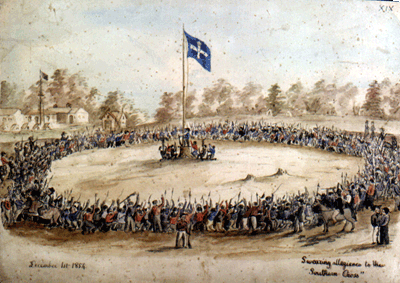Bushrangers were runaway convicts that were able to live and find refuge in the Australian bush to hide from authorities. The term ‘bushranger’ was later changed to mean, ‘those who abandoned rights and privileges to live robbing people and using the bush as their base’. The crimes that they did often included robbing small town banks and coach services.
Bushranging was common in Australia, but Tasmania had the most violent and serious outbreaks of convict bushrangers. More than 2000 bushrangers are believed to have lived in the Australian bush, including abandoned farms.
The last bushrangers were the Kelly Gang led by Ned Kelly. They defended their family against all odds. When Mrs Kelly was sentenced to three years in gaol for shooting Constable Fitzpatrick. Ned made a plan to release his mother. But it didn’t work, so he bailed up a police camp, killing three officers, which was after the Felons Apprehension Act and this meant they could be shot on sight. They then made a plan, which was to attack the train, steal the guns, shoot the officers, and break into the gaol, freeing the prisoners and robbing banks and stores, then vanishing. But the gang made a mistake of freeing a schoolteacher, who lit a flare on the railway tracks. This act alerted the police of the gang’s intentions.
 |
| The last bushranger, Ned Kelly |
Police made for Glenrowan Hotel, where they fired on the building. Ned was shot in the arm and retreated to the bush, where he fainted from blood loss. At dawn the next day, 29 June, a man in thick armour appeared in the fog. His armour only covered his body and face, while his legs and arms were left exposed. This allowed him to be shot in the legs. They took his helmet off and saw that it was Ned Kelly. At 3 PM, the police set fire to the hotel, Steve, Dan and Joe, who suffered bullet wounds, already lay dead inside. Ned was then taken to Melbourne Gaol Hospital until his trial on 28 October 1880. Then on 11 November, he was hanged.
 |
| Ned Kelly's homemade iron armour |


